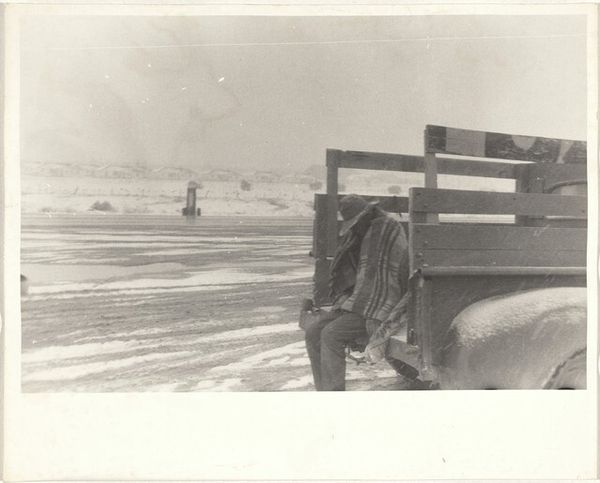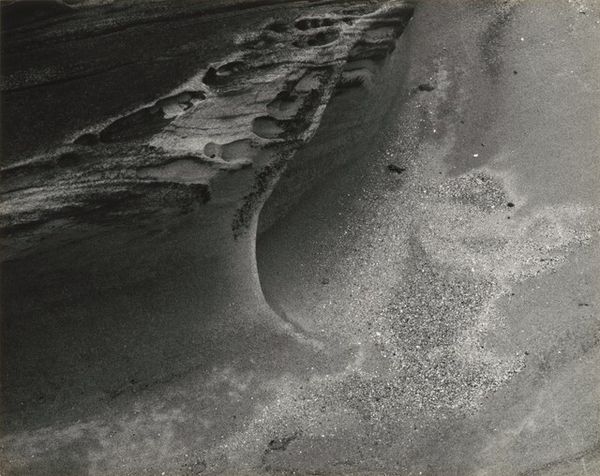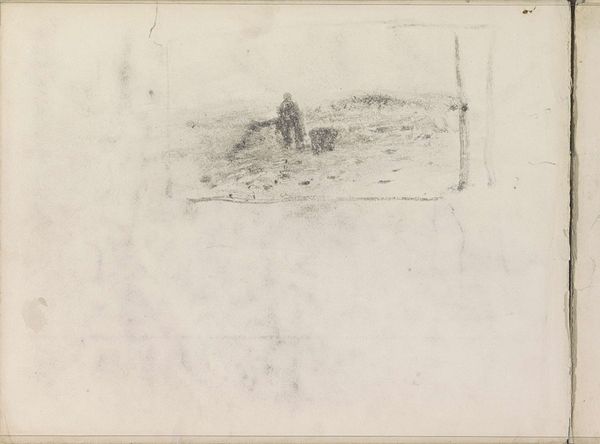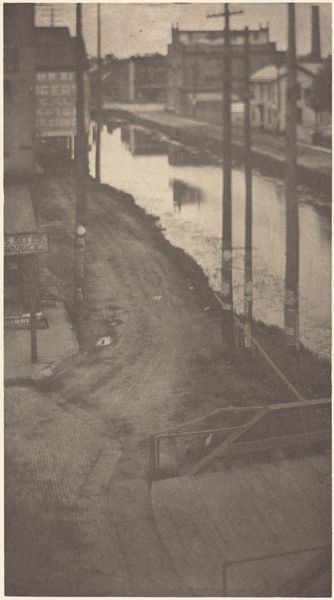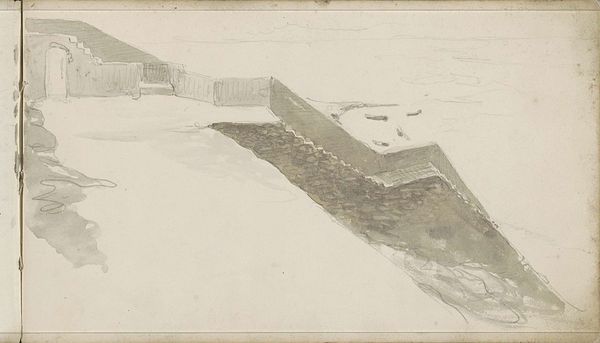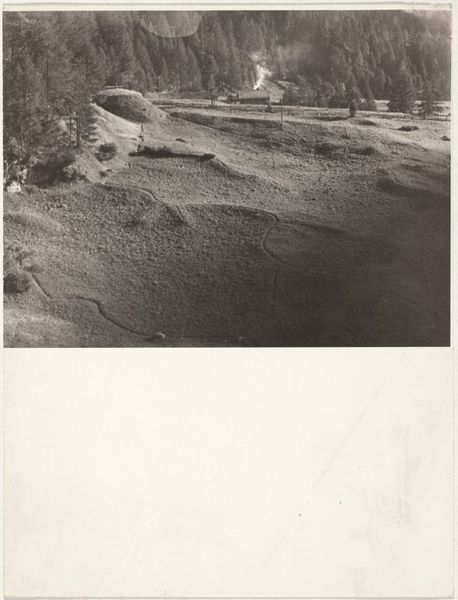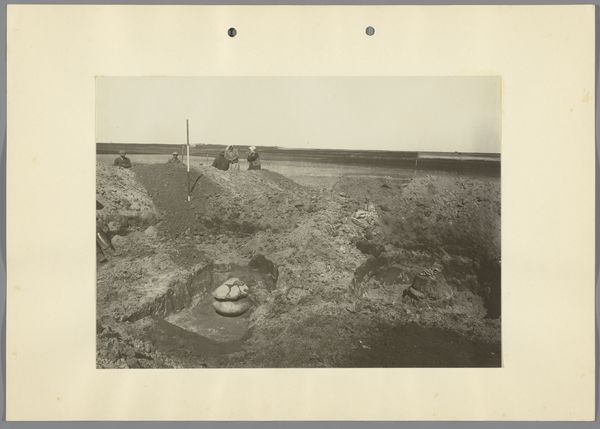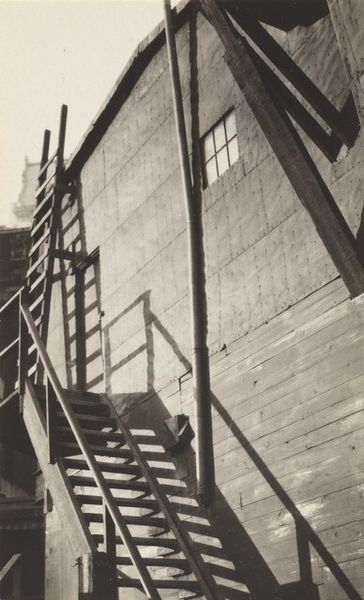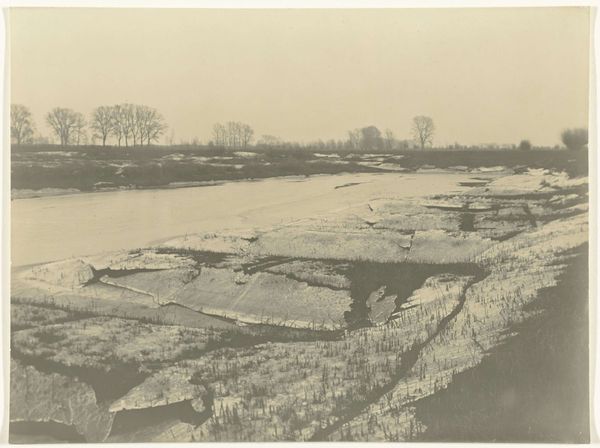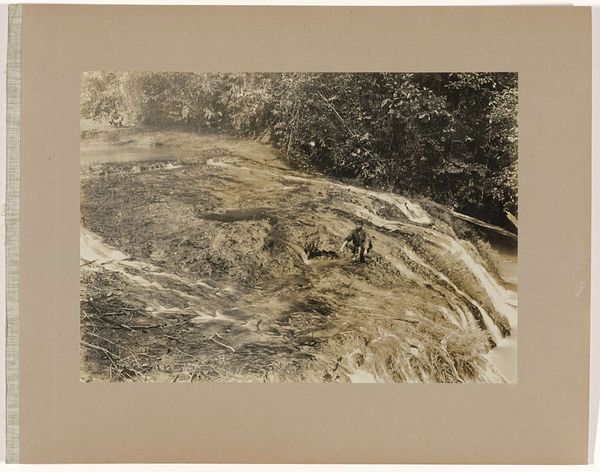
#
print photography
#
photo of handprinted image
#
photo restoration
#
natural tone
#
ink paper printed
# print
#
wedding photography
#
light coloured
#
natural colouring
#
couple photography
#
celebration photography
Dimensions: sheet: 20.3 x 25.4 cm (8 x 10 in.)
Copyright: National Gallery of Art: CC0 1.0
Editor: This is Robert Frank's "Man seated against wall, Paris" from 1951. It’s a black and white photograph of a man, rather small in the frame, sitting against a large stone wall. There’s a feeling of isolation in the composition; he seems dwarfed by the architecture and almost disappears into the grimy foreground. How do you interpret this work? Curator: The feeling of isolation you pick up on is key. In the post-war period, particularly in Europe, this image speaks volumes about the psychological landscape. The grand, almost oppressive architecture of Paris is no longer a symbol of triumphant empire, but a backdrop to individual alienation. Where does this man fit into this society, into this reconstructed world? Frank’s work, in general, pushes against the romanticized narratives we often see of that time. Editor: I see what you mean. He doesn’t seem celebratory or hopeful. He’s just… there. Was Frank trying to make a specific social comment? Curator: Precisely! He was deeply engaged with the social and political realities he observed. He questioned dominant narratives, and explored the marginal spaces, both literal and metaphorical, that existed within those societies. Think about what it meant to be a man in that era, with its pressure for economic and social stability. Was that achievable for everyone? And what about the societal expectations, or lack thereof, of providing care or emotional stability to men themselves? Editor: So, Frank is perhaps subtly critiquing those societal expectations, pointing out the pressure and perhaps even the failure they create. Curator: Exactly. The image prompts us to consider who is being left out of the post-war narratives of progress and prosperity. Who is seated, dejected, against the wall? Editor: This has totally changed how I see this image. I thought it was simply a portrait of loneliness, but it’s a comment on society and masculinity as well. Curator: That's the power of context. By understanding the historical moment, we can unpack so much more than what meets the eye initially. It moves from being just a photograph of one individual to a wider reflection on a struggling society.
Comments
No comments
Be the first to comment and join the conversation on the ultimate creative platform.
